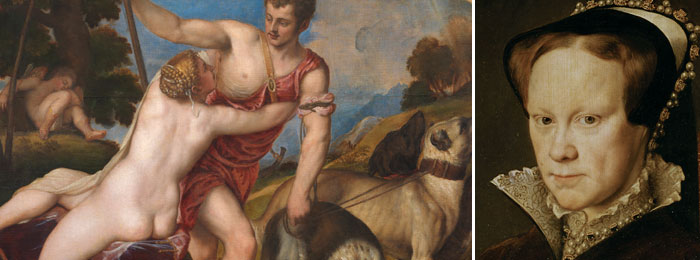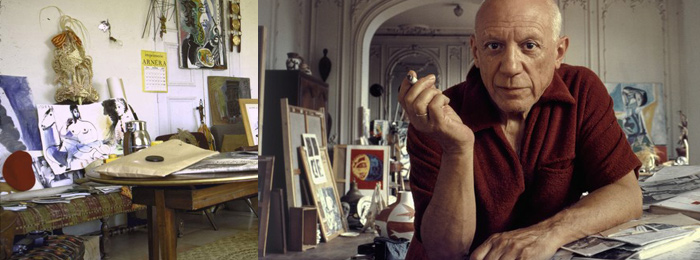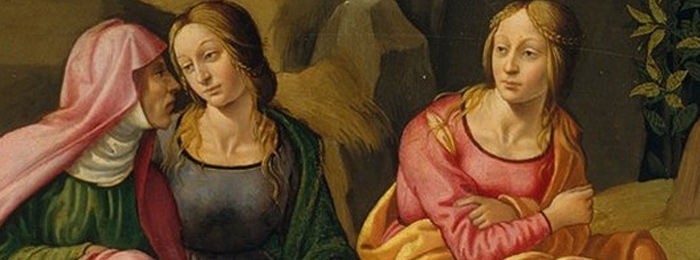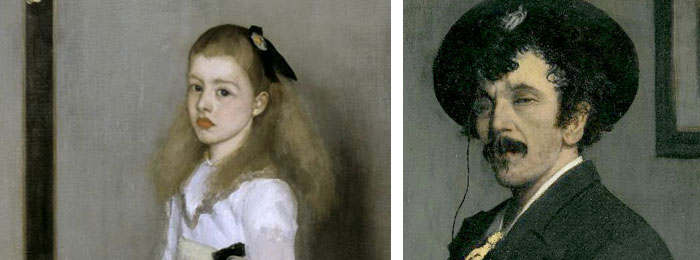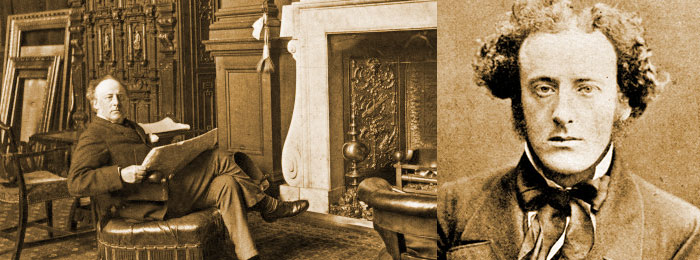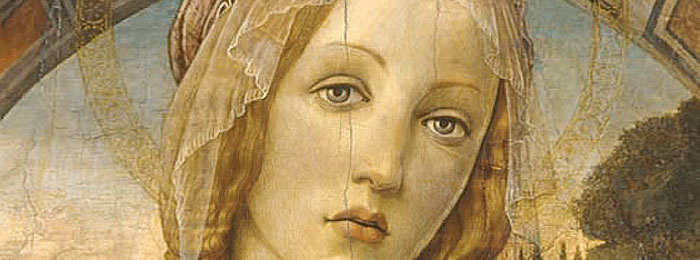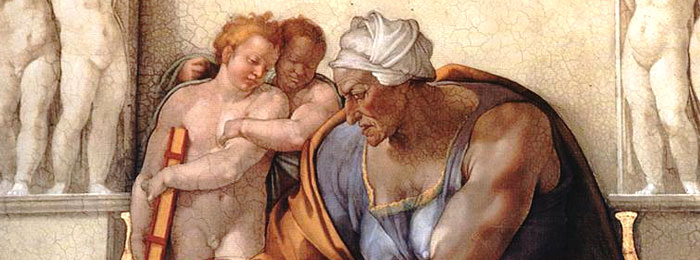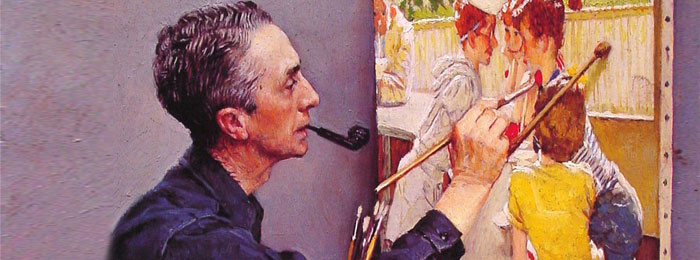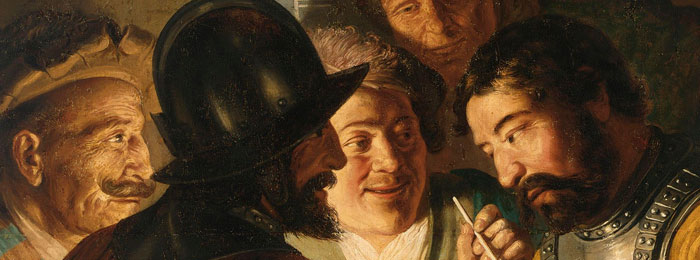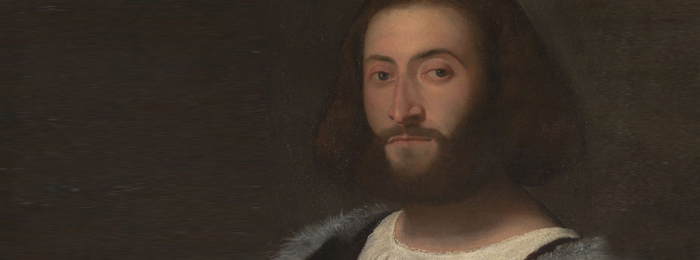On 16 Aug, 2015 With
ELEGANT ANECDOTES about TITIAN AND PHILIP II Titian was not less esteemed by Philip II., than by his father, Charles V. When Philip married Mary, Queen of England, he presented him his famous picture of Venus and Adonis, with the following letter of congratulation, which may be found in Ticozzi’s Life of Titian: “To Philip, King of England, greeting: “Most sacred Majesty! I congratulate your Majesty on the kingdom which God has granted to you; and I accompany my congratulations with the picture of Venus and Adonis, which I hope will be looked upon by you with the favorable eye you are accustomed to cast upon the works of your servant “Titian.” According to Palomino, Philip was sitting on his…
Read More
On 13 Aug, 2015 With
Pablo Picasso was a Spanish painter, sculptor, printmaker, ceramicist, stage designer, poet and playwright who spent most of his adult life in France. As one of the greatest and most influential artists of the 20th century, he is known for co-founding the Cubist movement, the invention of constructed sculpture, the co-invention of collage, and for the wide variety of styles that he helped develop and explore. Exceptionally prolific throughout the course of his long life, Picasso achieved universal renown and immense fortune for his revolutionary artistic accomplishments, and became one of the best-known figures in 20th-century art. At the tender young age of 9, Picasso completed his first painting: Le picador, a man riding a horse in a bullfight. His…
Read More
On 11 Aug, 2015 With
Rediscovered painting of Michelangelo by Milton Esterow A painting in the Metropolitan long attributed to the circle of Francesco Granacci is really by Michelangelo— according to experts who cite underdrawings, imagery, and aspects of the artist’s own biography as clues. “I’m acutely aware that Michelangelo, like van Gogh, attracts a lot of crazy ideas, and people are going to say, ‘This is another absurd idea,’” said Everett Fahy, one of the world’s most distinguished scholars of the Italian Renaissance, who retired in March as John Pope-Hennessy Chairman of European Paintings at the Metropolitan Museum of Art. “I’m expecting that they’re going to throw brickbats.” The brickbats may come from scholars who disagree with Fahy when he asserts that Saint John…
Read More
On 9 Aug, 2015 With
Whistler’s Oil Painting Technique Whistler’s approach to portraiture in his late maturity was described by one of his sitters, Arthur J. Eddy, who posed for the artist in 1894: “He worked with great rapidity and long hours, but he used his colours thin and covered the canvas with innumerable coats of paint. The colours increased in depth and intensity as the work progressed. At first the entire figure was painted in greyish-brown tones, with very little flesh colour, the whole blending perfectly with the greyish-brown of the prepared canvas; then the entire background would be intensified a little; then the figure made a little stronger; then the background, and so on from day to day and week to week, and…
Read More
On 8 Aug, 2015 With
Sir John Everett Millais was an English painter and illustrator and one of the founders of the Pre-Raphaelite Brotherhood. Millais’ Christ In The House Of His Parents was highly controversial because of its realistic portrayal of a working class Holy Family labouring in a messy carpentry workshop. All early works were painted with great attention to detail, often concentrating on the beauty and complexity of the natural world. In paintings such as Ophelia Millais created dense and elaborate pictorial surfaces based on the integration of naturalistic elements. This approach has been described as a kind of “pictorial eco-system”. This style was promoted by the critic John Ruskin, who had defended the Pre-Raphaelites against their critics. Millais’ friendship with Ruskin introduced him to Ruskin’s wife Effie. Soon after they met she modelled for…
Read More
On 5 Aug, 2015 With
Italian Renaissance portrait was unmask as a remarkably sophisticated 20th-century forgery. Sometimes we see what we want to see. When this Italian ‘Renaissance’ portrait was acquired by the National Gallery in 1923, it was hailed as a unique painting by an undiscovered master of the 15th century. Since the 1950s, connoisseurship, art historical research and scientific analysis have combined forces to unmask a remarkably sophisticated 20th-century forgery. This portrait was acquired by the National Gallery in 1923 as a painting of the late 15th century, possibly by an accomplished but unknown artist in the circle of Melozzo da Forli (1438?1494), an artist primarily active in Urbino and Rome. The armorial badge stamped into the gesso at upper right suggested the…
Read More
On 2 Aug, 2015 With
Interesting Facts about Michelangelo By Manali Oak Michelangelo was one of the greatest artists that Italy has ever produced. He is admired by the world for his works depicting his excellence in arts. Read on for some interesting facts about Michelangelo. Michelangelo was an Italian Renaissance painter, sculptor and architect. He was also a poet and an engineer. He made valuable contributions to each of the fields he worked in and remains being the best-documented artist of the 16th century. Let us look at some of the important and interesting facts about this great artist. Interesting Facts about Michelangelo Michelangelo was born on March 6, 1475 near Arezzo, Tuscany. His birth name was Michelangelo di Lodovico Buonarroti Simoni. He was brought…
Read More
On 1 Aug, 2015 With
Acrylic Paint or Oil Paint? Trying to decide which type of paint to use to paint your next art masterpiece? Should you go with the tried and true oil paints, or should you try the newer medium of acrylic paint? Each of these types of paints has their pros and cons which you should investigate so that you can choose the medium that suits your painting style. You are the artist, you make the call. Oil paint, the traditional medium, is basically powder pigments mixed with clear linseed oil. This paint is slow drying and for that reason is perfectly suited for blending colors together smoothly with plenty of time to contemplate the painting’s progress and still have time to…
Read More
On 30 Jul, 2015 With
Portrait of young Rembrandt Leading scholar believes that the 16-year-old artist features in a Lievens painting By Martin Bailey AMSTERDAM. The earliest depiction of Rembrandt has been identified in a painting by his colleague, Jan Lievens. American art historian Dr Arthur Wheelock, of the National Gallery of Art in Washington, DC, says that Rembrandt is the central figure in The Cardplayers, 1623-24, when Rembrandt was aged 16. The painting, owned by a private collector, is currently on show in a Lievens exhibition at the Rembrandthuis in Amsterdam (until 9 August), following its presentation in Washington and Milwaukee. The picture was sold at Sotheby’s, Amsterdam, on 8 May 2007. Rembrandt and Lievens studied together in Amsterdam under Pieter Lastman. Dr Wheelock is…
Read More
On 26 Jul, 2015 With
TITIAN’S WORKS.Copies or Originals? The works of Titian, though many of his greatest productions have been destroyed by terrible conflagrations at Venice and Madrid, are numerous, scattered throughout Europe, in all the royal collections, and the most celebrated public galleries, particularly at Venice, Rome, Bologna, Milan, Florence, Vienna, Dresden, Paris, London, and Madrid. The most numerous are portraits, Madonnas, Magdalens, Bacchanals, Venuses, and other mythological subjects, some of which are extremely voluptuous. Two of his grandest and most celebrated works are the Last Supper in the Escurial, and Christ crowned with Thorns at Milan. It is said that the works of Titian, to be appreciated, should be seen at Venice or Madrid, as many claimed to be genuine elsewhere are…
Read More


